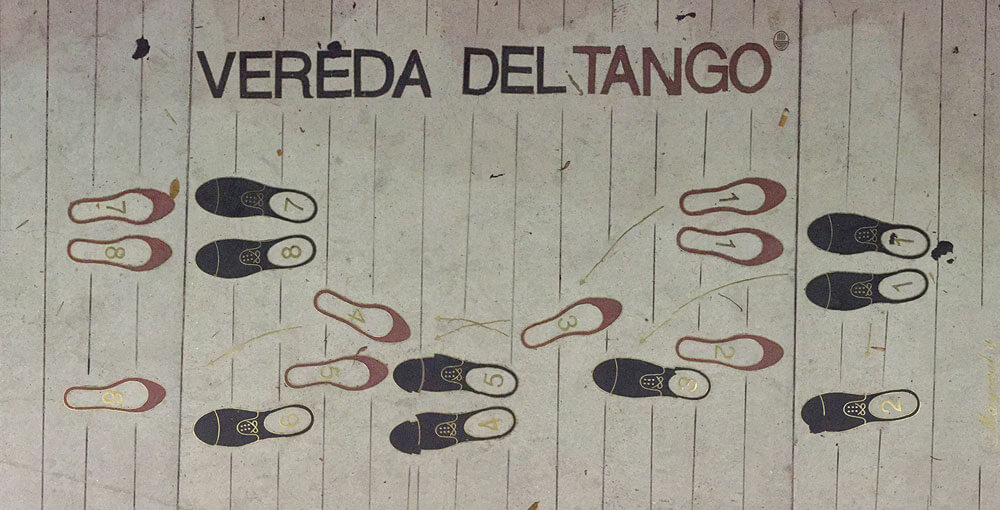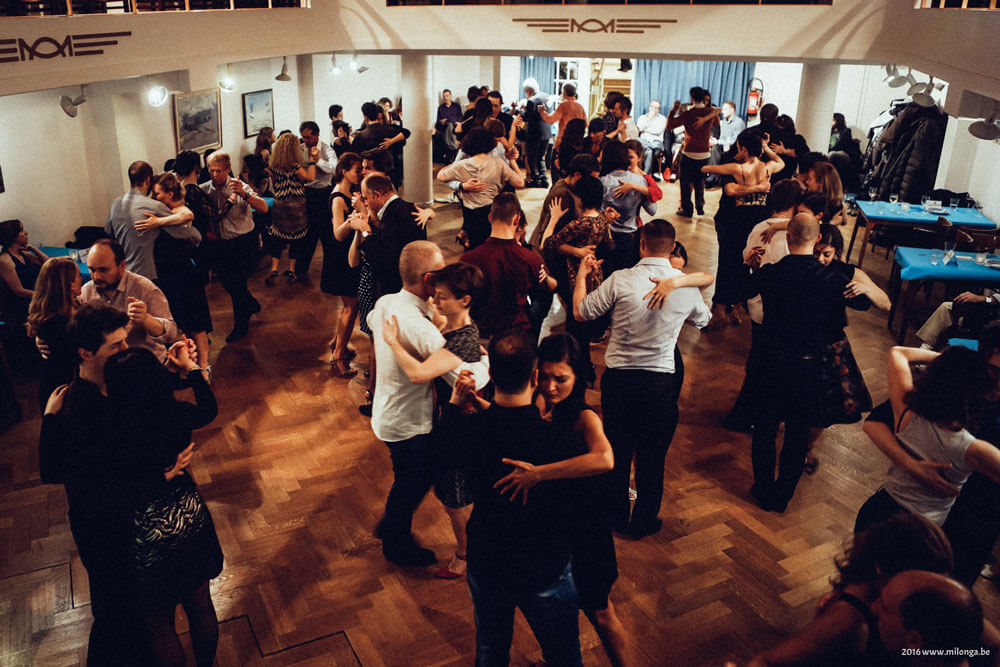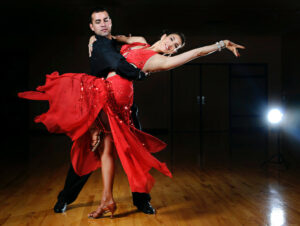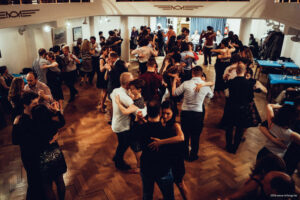CONTENT
First of all, an answer to the question of whether we only dance tango. “No, we don’t just dance tango.” While you might expect that when you sign up for a dance class entitled “Argentine Tango”. Because within Argentine tango you learn two other dance variants, the vals and the milonga.
But what exactly is the difference between tango, vals and milonga? And what are their typical characteristics? Which dance steps do we use and what are the musical differences?
That is why here is an overview of all those questions.
1/ TANGO, A WALKING DANCE
Tango is often said to be a walking dance. Because a lot of attention is paid to the way this “walk” (caminata) is carried out. Although seemingly simple, it can quickly take a decade to perform the perfect caminata in closed embrace (abrazo cerrado). In tango we alternate this caminata with circular movements such as an ocho, giro, media luna, boleo, sacada, lapiz, … Literally every movement is possible in tango. But of course everything depends on the type of tango music to which people dance.
In all this variety of dance movements, one element is always central, namely the pause. So you can see the tango as a dance in which one moves from one pause to another in a smooth movement. This pause or parada allows to emphasize the dramatic and passionate element of the tango.
So we can ask ourselves how we should walk to the tango music? Since we often take breaks, it is important to prepare the body well for this. In this way we are able to transfer the weight gradually and in a controlled manner from one leg to the other in order to move our axis. As a result, we roll the feet nicely and press on the standing leg for a very long time. In this way we can easily pause and restart.
It goes without saying that all this depends on the type of tango music and the rhythm. Dramatic and slow music invites us to push for a long time and consequently to make slow, long steps. In contrast, cheerful and rhythmic music is more likely to encourage us to take smaller steps with a shorter push.
A perfect example of a cheerful, playful tango is this song “Mis Pesares” by
Edgardo Donato & Horacio Lagos from 1940.
“Recién” by Ricardo Tanturi & Enrique Campos from 1944 is a fine example of a slow, melancholic tango.
2/ TANGO VALS
The waltz invites the dancer to make circular movements and this because of the continuous 1-2-3 rhythm that typifies this music. For example, during the tango vals we make use of movements such as giros, contra giros, sacadas, giros that we repeat several times, etc., …
The big difference between tango and vals is that while dancing we now omit the pauses (paradas). That is because there are few pauses within the vals music. As a result, the passionate and dramatic aspect is partly lost. Because of this, the tango waltz feels like a happy dance. Vals may seem difficult at first, but it actually isn’t.
Therefore, we have to ask ourselves which technique is best for dancing the vals. The constant rhythm of the vals means that we have to adapt our walking in comparison to tango. That is why we push off less long on the standing leg. We give a short dynamic push on the first strong beat of the 1-2-3 rhythm. Because all movements follow each other quickly, it is important to arrive on a relaxed knee. When you apply this, you can more easily push off to the next dance step. This also makes the vals feel more flexible and cheerful.
3/ MILONGA
The milonga music is characterized by its “traspié contratiempo” rhythm. The music is usually faster than with tango. As a result, we cannot use the many circular movements of the tango when dancing milonga. Because there is simply no time to do those tango movements. Just like with vals, there are few pauses in the music in the milonga, which again gives the music the typical playful character.
Because we have to respond quickly to the rhythmic changes in the music, we cannot push on the standing leg for long. Because of this we usually make smaller dance steps, especially during the accelerations. The weight, or axis, is – unlike with the tango – divided between both legs. In addition, as in the vals, it is again important to arrive on a relaxed knee. This way you are ready for the next dance move.
Milonga is faster than waltz and tango, you get less time to react. That’s why milonga is one of the most difficult dances to master.
One of the most famous milongas is “Milonga Sentimental” by Francisco Canaro from 1933.
This incredibly fast “Milonga del 83″ by Juan D’Arienzo is quite a challenge to dance to.
4/ DANCE STEPS
While you may expect to learn new dance steps to be able to dance vals or milonga, the opposite is true. We actually use the same combinations in all three dances. So you don’t have to learn new structures. Despite that, you will soon notice that some movements are more suitable for tango than milonga or vals. So it comes down to discovering which dance steps best suit each type of music.
If it goes very fast, such as in the milonga, you will have too little time to perform an overturned ocho. If you dance to the constant rhythm of the vals, you will not often be able to use pauses (paradas).

5/ CHEERFUL, PLAYFUL AND SAD?
Lastely: very often the melody of the music sounds very happy and playful, but the lyrics are sad and melancholic. This applies to tango, vals and milonga. This feels like a strange contradictory combination that beginning dancers do not think about. Because how joyful a piece of music can sound and invites you to dance happily, the text can – when you read it – be so incredibly sad and dramatic that you will dance to it in a completely different way next time.
Conclusion
Anyone who learns to dance tango automatically ends up with the milonga and waltz. No doubt every self-respecting dance teacher devotes a good part of his time to this. This gives you as a dancer the correct information to practice. And you do not only practice with your body, but also with your hearing by listening to the music. The dance moves are very similar, but one lends itself better to tango, the other more to vals or milonga. What is typical is the manner and quality of steps. Hence again the importance of a good basic knowledge and technique of the caminata.
Ultimately, it comes down to enjoying the tango, vals and milonga. Try out the movements as much as possible and experiment on the different types of music. It does not matter which dance step fits or not. There will be no jury watching you while you dance! As long as it feels good to you and your dance partner!
Check our online lessons, in our archive you will find lessons specifically about milonga & vals.




